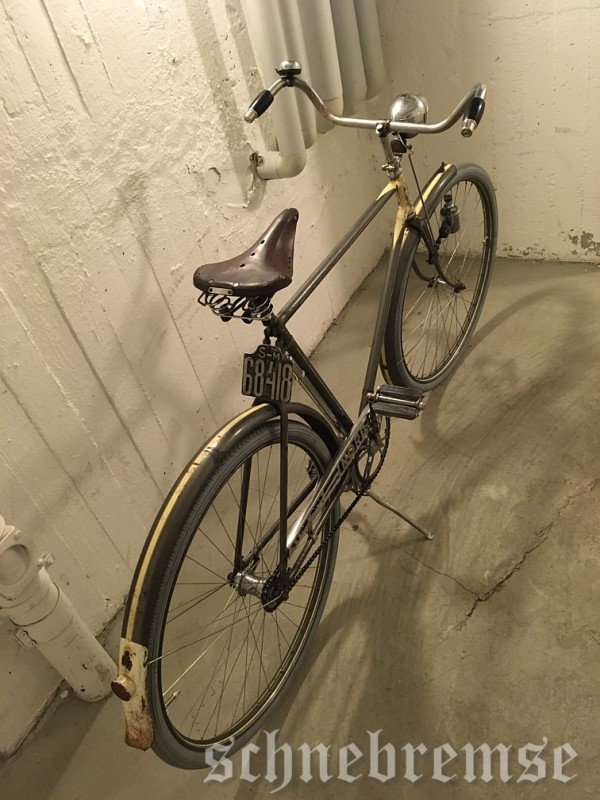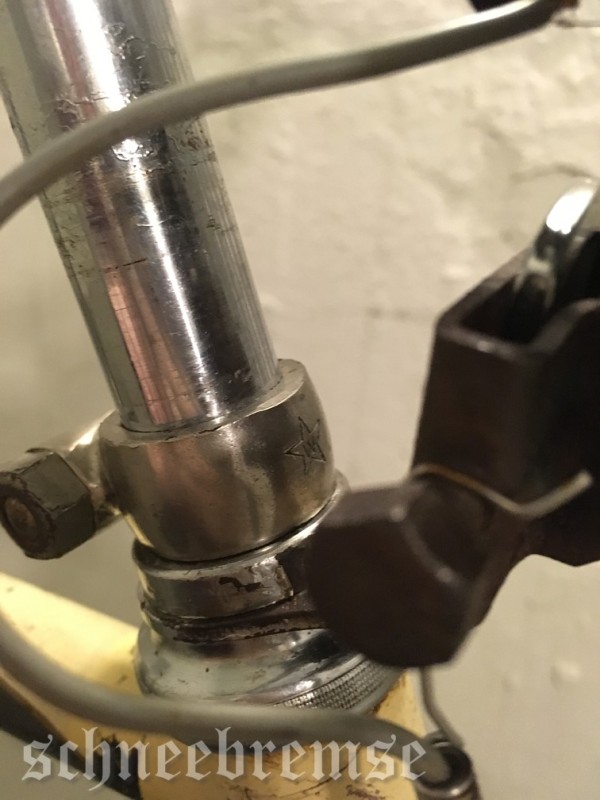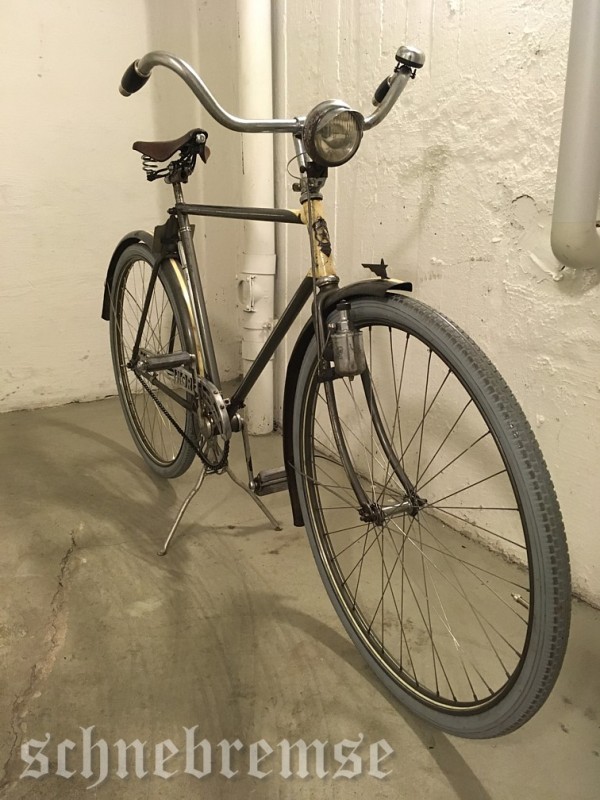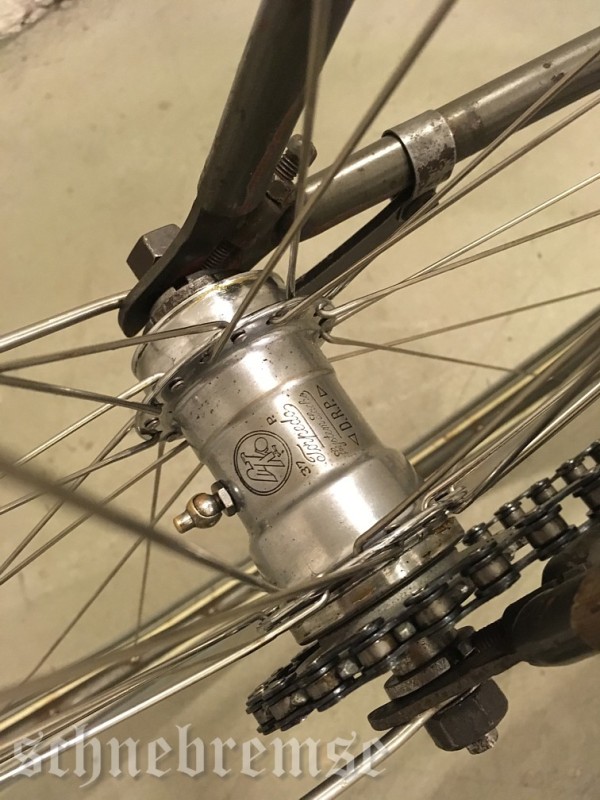The wheels.
Those wheels that made my hair grey, my wallet cry and my blood boil.
Now, it can not be so bad I hear you say. Well, it can. Because after buying all parts in that strange shop in the city. I sat down and started to think on how to tread the wheels. After all I got the rims, the spokes and the hubs. Also lovely Torpedo hubs with nickel finish. The rear hub was made in 1935, spotless and all cleaned up by me. I bought it from Germany just to get the right style. I was happy, things started to move. The front hub was a find in a shop in a good bicycle shop in the city.
I looked on internet how to thread bicycle wheels. It seemed simple, just remember to focus and always count the numbers of spokes and the holes in the rim. There is many different ways to thread a wheel, but I wanted the wheels threaded in the old way so it looked as the other wheels I had. So I went down in the basement and looked at my old bicycles wheels. Counted the spokes, made a drawing on how the spokes were placed and how they were threaded.
Then I started. The rim, spokes, nipples and hub was laying all over the kitchen table. First spoke, in the first hole on the hub. Thread the spoke by the hone in the rim, ine hole next to the hole for the valve for the tube. Screw on the nipple. There the first spoke was in place. It felt good. Second spoke, three holes, turn, adjust, hold the hub, keep the rim in place, now where is the nipple? Third spoke, who placed the spokes over there?! Repeat the process, then it came the matter of crossing of spokes. Now that spoke should go there, in to that hole. Where did the nipples go?! With the left hand trying to get the nipples on the right side of the table at the same time the right hand is holding the hub. Now It is time for the other side! Why are there nipples on the floor?! Who moved the spokes?!
After a while I got the hang of it. Of course I did some errors along the way, but if you do something many times you get the hang of it. So did I when threading the spokes. The look was exactly as the vintage wheels I had in the cellar. I was quite please with myself.

Now the matter of truing the wheel. Remembering the fellow in the shop saying that he could do it for me. I decided to take the wheel to a different shop. They are professional and has a huge store. I went there with my wheel, happy as can be. The person behind the counter took the wheel and accepted the work. Now things became strange. There was another fellow there letting me know that I threaded the wheel wrong. I explained that it was not wrong. I did as they used to do back in the days. No, that was wrong. I have never seen that style of threading. Well, I really would like to have it the way it is, only truing the wheel.
After a week the wheel was ready. Then I got the surprise of realizing that they had retreaded the wheel, they made a “modern” style of threading, a more racer adjusted crossing of the spokes. I was really disappointed. Not only did they rethread the wheel they also charged me for the work to tear down my threading and build up the wheel again from loose spokes, rim and hub.
The payment for that rear wheel landed on almost £200 in total. For £200 I can get a complete vintage bicycle in good condition. I felt that my heart was sinking, my black bicycle project came to a halt. Also that I needed to build the front wheel too.
In the end. Two wheels, front and rear. Black 1930’s rims with white lining, Torpedo hubs and brand new spokes and nipples costed me more than 2-3 complete bicycles. I put the frame, mudguards and wheels in the cellar, behind old cardboard boxes. It was painful to see the parts, they reminded me of my own stupidity.
















